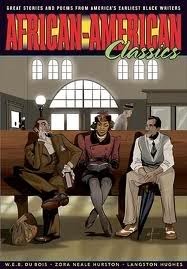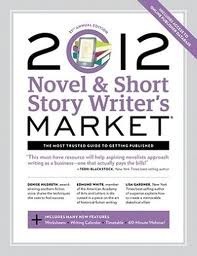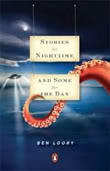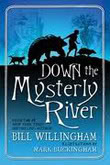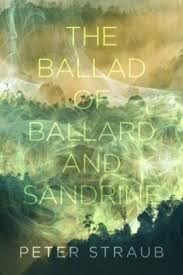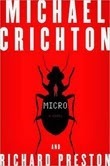Alex C. Telander's Blog, page 88
January 24, 2012
"Unquiet Slumbers for the Sleepers" Wallpaper & Icons
As promised, here you can get your free Unquiet Slumbers for the Sleepers wallpaper and icons, which are also available on the BookBanter site.
WALLPAPERS
To download wallpapers, right-click over your desktop size: 1024×768 or 1680×1050 (if you're desktop of smaller, choose smallest size), and save. Alternatively, you can click on the size and it will open the large wallpaper, and once it's loaded you can right-click and "Set as Desktop Background."

ICONS
To download icons, simply right-click over the image and hit save.








January 21, 2012
A Wallpaper Coming Soon to a Desktop or Laptop Near You . . .
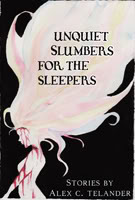
I'll be working this weekend on making up a wallpaper of the cover of Unquiet Slumbers for the Sleepers, which I hope to have available on Monday. You'll be able to download it for free on the BookBanter site, or you can email me at alexctelander@gmail.com.








January 20, 2012
"African-American Classics" edited by Tom Pomplun (Graphic Classics, 2011)
Graphic Classics is known for publishing some truly great graphic novels, adapting and collecting graphic tales of works from such renowned authors as Edgar Allan Poe, Ambrose Bierce, Jack London, Mark Twain, H. G. Wells and H. P. Lovecraft to name a number of them . . . notice a certain characteristic in common with all these white men? In their latest volume, number twenty-two, they have published one of their most important yet: African-American classics.
This illuminating collection features original works from Langston Hughes, Zora Neale Hurston, W. E. B. Du Bois, Claude McKay, James Weldon Johnson, and many more; adapted by various writers, and a number of different artists, bringing each individual tale to life and prominence. What makes this collection even more enjoyable is that it is comprised of not just short stories, but also lots of poetry, breaking up the feel of back to back stories with entertainingly illustrated poetry as interpreted by the artist.
Perhaps the most enjoyable aspect of African-American Classics is that it features in most cases an all-black cast of characters, which I can say I haven't seen before in any other graphic novel I've read. Seeing black characters at all in graphic novels can be rare, but hopefully this collection will help to change this sad lacking in today's comic books.
Originally written on December 30, 2011 ©Alex C. Telander.
To purchase a copy of African-American Classics from Amazon, and help support BookBanter, click HERE.








January 19, 2012
"2012 Novel and Short Story Writer's Market" edited by Adria Haley (Writer's Digest Books, 2011)
In the 2012 version of Novel and Short Story Writer's Market — the 31st Annual Edition — perhaps more so than ever, the key to the 600+ page book is its ease to navigate through it to help the user/reader get the information they need as quickly as possible. It begins with a thorough contents listing and a "how to use this book" guide, along with the detailed index, finding that necessary publisher or magazine is a cinch.
This volume features articles divided into sections: "Craft & Technique" includes "Avoiding Cliches," "Writing Authentic Dialogue," and "Crafting Short Stories" to name a few; "Fiction Genres" on "Romantic Author Roundup," with specific articles on authors like Julia Quinn, Lisa Gardner, Michael Swanwick and Ken J. Anderson; as well as "Managing Work" covering "Agent," "Self-Publishing" and "Practical Tips for the Nighttime Novelist." The "Resources" section helps clue in every kind of writer on terms and organization, even with a special section for Canadian writers. The editor has even included a whole section called "Writing Calendar," featuring a page for each month of the year, as she talks about the importance of goals, and there's a page for each month to help the writer hit his or her goals.
The layout of the publishers and magazines makes it quick and easy to find a contact email or website, which is crucial in this technological age. This edition also includes a free one-year subscription to WritersMarket.com (www.writersmarket.com). The volume has been thoroughly updated and made ready for the advent of the ebook and self-publishing revolutions, providing many necessary tools and references for today's writer. Whether you're a novelist with plenty of books under your belt, or a first-time freelance writer looking to publish that first piece, 2012 Novel and Short Story Writer's Market is a simply must have book.
Originally written on December 30, 2011 ©Alex C. Telander.
To purchase a copy of 2012 Novel and Short Story Writer's Market from Amazon, and help support BookBanter, click HERE.








January 18, 2012
GUEST POST: "The Other Character: Setting" by Ryder Islington
Ryder Islington
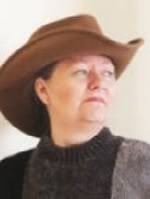
One of my favorite parts of writing a novel is creating a world. My debut novel, Ultimate Justice, A Trey Fontaine Mystery, is set in a small fictional town, Raven Bayou, in southwest Louisiana. I loved laying out a map of the town, naming the streets and shops, and placing it in just the right location in the South.
Setting can be considered a character if you give it character. Raven Bayou has a Courthouse Square, a city park, and two casinos on the river. It is mostly a quiet town. The casinos are there for those passing from New Orleans, west into Texas. Instead of a police force, it is serviced by the county sheriff's department. There is a ritzy neighborhood, including a horse ranch owned by a villain, and a Cajun neighborhood where that thick pigeon French/English language spoken.
Choosing a location for placing the town was easy. I wanted it to be in the deep South where my one African-American homicide cop had to cope with prejudice on all fronts. And since the world seems to love New Orleans, I thought being within driving distance would give me options. But I didn't want to use New Orleans itself. I'd rather create my own town.
This location also allowed me to bring up the way women are treated in the South. In truth a lot of the men place their women on pedestals. Unfortunately, many women, while worshiped and treated like ladies, are also considered unable to do what men do. They don't belong on the streets as cops. So that was perfect for my female cop. Never mind that she has had major problems in her past. Now she has to deal with men who don't appreciate her presence.
Writing a novel allows us to create whatever we want, as long as it's believable. We can use the climate, the political and religious beliefs of the region, the land, water and animal life.
In chapter on of my book there is a crime scene just outside the city proper. A dirt road with houses a half mile apart on one side and a verdant jungle on the other. Pastures with horses, out buildings used for storage, for garden tools, for chicken coops. And of course, the ever present humidity of Louisiana. If it's not raining, wait a minute. If your clothes aren't sticking to you, you must be inside under the a/c.
Location can be a vital part of your story. It can be used to hide things, to make things more difficult for characters, to cause accidents, or create excuses. Every part of the location can be used. The local entertainment: rodeos, theaters, lake resorts, casinos, land and wildlife for hunting, rivers for fishing. The landmarks: Courthouse, sheriff's department, casino, bayou. The language: French Cajun, pigeon English, Southern slang. Expectations: Blacks are ignorant, women are weak, men are supposed to fight and drink, and be protectors. It's okay to go there. You can even create that one person who doesn't fit in, who constantly fights the locals, trying to break the stereotypes and another who is so entrenched in local beliefs that he or she will never change. And just for fun, add a person or two who fakes the local prejudices just to avoid arguments. Make the place real. Make it breathe. Sprinkle in the local color. Think about where you live. Write it down. Practice bringing that to life, and then do the same with your setting.
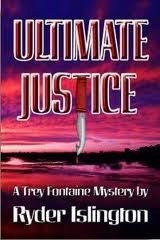
Ultimate Justice, A Trey Fontaine Mystery is receiving rave reviews from readers.
The small town of Raven Bayou, Louisiana explodes as old money meets racial tension, and tortured children turn the table on abusive men. FBI Special Agent Trey Fontaine returns home to find the town turned upside down with mutilated bodies. Working with local homicide detectives, Trey is determined to get to the truth. A believer in empirical evidence, Trey ignores his instincts until he stares into the face of the impossible, and has to choose between what he wants to believe and the ugly truth.
A graduate of the University of California and former officer for a large sheriff's department, RYDER ISLINGTON is now retired and doing what she loves: reading, writing, and gardening. She lives in Louisiana with her family, including a very large English Chocolate Lab, a very small Chinese pug, and a houseful of demanding cats. She can be contacted at RyderIslington@yahoo.com or visit her blog at http://ryderislington.wordpress.com








January 17, 2012
Hey, I Self-Published a Book: "Unquiet Slumbers for the Sleepers"
Stories
by Alex C. Telander

"With an imagination that knows no bounds, Alex Telander has crafted an amazing genre spanning collection that kept me turning pages till dawn." — Richard Doetsch, New York Times bestselling author of Half-Past Dawn, Thieves of Darkness and The 13th Hour.
In this debut collection, readers get to see into the dark and twisted mind of Alex C. Telander. Unquiet Slumbers for the Sleepers features ten original short stories that run the gamut of genres, from dark and bloody horror to futuristic science fiction; from a captivating thriller to an epic tale of historical fiction. And then there are those stories that simply can't be classified, but once you read them, you won't be able to get them out of your mind . . .
The collection begins with a short piece about a young boy who doesn't know who he is, but hungers for blood. "How to Commit Perfect Suicide" is a detailed, step-by-step process for those wanting to end it all. "Midnight" is the story of a dark horror set loose on an idyllic English town and it's all up to one man to stop it. "The Monk and His Sword" is a work of historical fiction, set in early medieval Britain, about a monk who is also a warrior, who finds himself besieged in the old city of Londinium. The collection ends with "The Shadow in Black," as Frank Minerva finds his life changed forever in a horrific accident, and a vision of a creature he believes to be the Grim Reaper. Unquiet Slumbers for the Sleepers also includes two sneak peeks: the first chapter to a young adult fantasy, Kyra: the First Book of Enchantus; and the first chapter of the thriller, Nothing is an Accident.
Unquiet Slumbers for the Sleepers does what all short story collections should do: presents a number of captivating and fascinating tales that are all different and unique, that leave the reader thinking and wondering, as well as making sure all the lights are on and all the doors are locked.
Click on the "Purchase Book" link below to buy the book, and/or the "Smashwords" link to view my Smashwords profile.
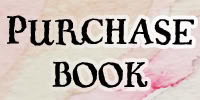









January 16, 2012
The Man of Many Minds: An Interview with Ben Loory

Ben Loory is a short story writer who has been published in Gargoyle Magazine, Quick Fiction, Keyhole Quarterly and The Antioch Review. His story "The TV" (featured in his debut collection) was published in The New Yorker. Stories for the Nighttime and Some for the Day is his first short story collection. In the interview he talks about how he became a writer, how he writes short stories, where he gets his ideas, and what he likes to do in his spare time. Read the interview . . .








January 13, 2012
"Down the Mysterly River" by Bill Willingham, illustrations by Mark Buckingham (Starscape Books, 2011)
The dynamic duo who've been entertaining fans for years with the fantastic comic book series Fables now turn their writing and illustrating talents to middle readers. Down the Mysterly River is a quaint, entertaining tale that straddles a perfect balance between a memorable fable or fairy tale, and a great kid's story. Combining Bill Willingham's skill as a storyteller and Mark Buckingham's recognizable illustrations, this book is a delight for anyone, be they child or adult.
Max "the Wolf" is the best of the best when it comes to Boy Scouts, so when he wakes up to find himself in a strange and unfamiliar place, the last thing he's going to do is panic. He's got his tools and his abilities to tackle anything. When a badger named Banderbrock shows up and starts talking to him, Max thinks it's a little weird – maybe he's dreaming? – but keeps on going. Before long he's on the run from a group of hunters and their snarling hounds, picking up new friends along the way: Walden the black bear and McTavish the Monster (who looks quite a bit like an old barn cat). The question is will they be able to keep themselves from getting caught, and why is this all happening to Max anyway?
Originally written on December 1, 2011 ©Alex C. Telander.
To purchase a copy of Down the Mysterly River from Amazon, and help support BookBanter, click HERE.








January 12, 2012
"The Ballad of Ballard and Sandrine" by Peter Straub (Subterranean Press, 2012)
In this new and short release from bestselling author Peter Straub, it's a story that seems ordinary and tame at first, as the reader gets introduced and interested in two unique characters, but eventually becomes dark and scary and despairing. By the end of the 96 pages of The Ballad of Ballard and Sandrine, it is quite a different tale that the reader may want to hide away somewhere.
The story of these two lovers, Ballard and Sandrine, takes place over a period of 25 years, as the reader learns of their relationship at different points in time from chapter to chapter, which takes place in the same setting: a trip by riverboat down the exotic Amazon. While there is a large gap in age between the main characters — they apparently fell in love when Ballard, in his twenties, saw Sandrine, when she was fifteen, for the first time — they are besotted with each other and get up to lots of fun on these boat trips. But then the dark side begins to creep in, with a story of blood and murder.
Overall, the story is somewhat disappointing, as Straub plays a little too much on the "exotic" nature of the Amazon and the natives, while the horror aspects of the story come as kind of surprise. A longer novella or even novel might've allowed for more development in these areas, nevertheless The Ballad of Ballard and Sandrine is an interesting experiment in what Straub was trying to do.
Originally written on December 18, 2011 ©Alex C. Telander.
To purchase a copy of The Ballad of Ballard and Sandrine from Amazon, and help support BookBanter, click HERE.








January 10, 2012
"Micro" by Michael Crichton and Richard Preston (Harper, 2011)
Found as an incomplete manuscript on the late Michael Crichton's computer, Micro is an example of the old style of Crichton's work, with a great extension of cutting edge science, pushing it into the field of science fiction. In some of Crichton's more recent novels there has been an overbearing philosophy and biased political angle; fortunately, there is little of this in Micro, though his "corrupt" characters are thin and painfully obvious. Richard Preston, author of The Hot Zone and The Demon in the Freezer, was brought in by the publisher to complete the manuscript, and he does a good job of making the whole novel feel seamless, working off of Crichton's outlines, notes and research.
Micro opens with the scene of three unknown bodies found in a business office in Honolulu; cause of death is uncertain at first, and then attributed to a number of micro cuts and lacerations over the whole body, including, when it is investigated, inside the body on tissues and organs. Cut to Nanigen Technologies, an up and coming company with a number of secret projects going on. Seven graduate students are picked from MIT to become assistants for the company located in Hawaii, but stumble onto some details they shouldn't know anything about. Before they know it, they find themselves shrunk down to just inches in size and abandoned in a rain forest arboretum, left to die. The question is whether they can first keep themselves alive at this size, with everything out to get them, and then get themselves back to normal size and stop the people behind all this.
Micro definitely has its high points, and while the characters can seem predictable and shallow, overall it's an entertaining novel that doesn't hold up to any of Crichton's greats, like Jurassic Park and Congo, but is nevertheless a fun last book from this bestselling author.
Originally written on December 28, 2011 ©Alex C. Telander.
To purchase a copy of Micro from Amazon, and help support BookBanter, click HERE.









